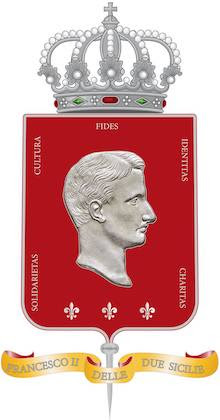"For in Naples princes and paupers, the aristocracy and the poor, have all known one another for countless centuries, and their acquaintanceship has been handed down from generation to generation, from father to son. They know one another by name, they are all blood relations, in virtue of that family affection which has from time immemorial existed between the commonalty and the old nobility, between the hovels of Pallonetto and the palaces of the Monte di Dio. From time immemorial the aristocracy and the commonalty have lived together in the same streets, in the same palaces, the populace in their bassi, in those dark caves which open out on to the alleys, the aristocracy in the magnificent gilded halls of the piani nobili.* For countless centuries the great noble families have fed and protected the common people, huddled together in the alleys that surround their palaces, not, to be sure, in a spirit of feudalism, nor merely out of Christian charity, but in fulfillment, I would say, of the obligations of kinship. For many years the aristocracy too have been poor; and the populace almost seem to apologize because they cannot help them. Commonalty and nobility share the joy of births and marriages, the anxieties of sickness, the tears of mourning; and there is not a pauper who is not accompanied to the cemetery by the lord of his district, nor a lord whose bier is not followed by a weeping crowd of paupers. It is an old saying among the populace of Naples that men are equal not only in death, but in life.Reprinted from The Skin by Curzio Malaparte, translated from the Italian by David Moore, New York Review Books, 2013, pp.238-238
"The traditional attitude of the Neapolitan nobility to death is different from that of the common people. They greet it not with tears but with smiles, almost gallantly, as one greets a beloved woman or a young bride. In Neapolitan painting, as in Spanish, weddings and funerals recur with a haunting regularity. The pictures have a macabre and at the same time a gallant character; they are the work of obscure painters who maintain even today the great tradition of El Greco and Spagnoletto, though in their hands it has lost its scrupulousness and its distinctive character. And it was an ancient custom, observed until a few years ago, that noblewomen should be buried with their white bridal veils about their heads."
* The "noble floors," i.e., the two floors immediately above the mezzanine. (Translator's note.)
skip to main |
skip to sidebar

O God, who has placed a great light in Your saints and a provident support for Your people along the path, listen with goodness to our prayer, and glorify Your servant Maria Cristina di Savoia, in whose life as a wife and queen You have offered us a shining model of wise and courageous charity, and grant us, through her intercession, the grace [mention here the graces you are asking for] which from You, with trust, we invoke. Through Christ our Lord. Amen.

O One and Triune God, Who casts Your glance on us from Your throne of mercy, and called Francis II of Bourbon to follow You, choosing him on earth to be king, modeling his life on the very Kingship of Jesus Christ, crucified and risen, pouring into his heart sentiments of love and patience, humility and meekness, peace and pardon, and clothing him with the virtues of faith, hope and charity, hear our petition, and help us to walk in his footsteps and to live his virtues. Glorify him, we pray You, on earth as we believe him to be already glorified in Heaven, and grant that, through his prayers, we may receive the graces we need. Amen
Introduction
Il Regno is not a formal membership organization. We are a circle of like-minded individuals based in Brooklyn, New York, who volunteer our time and efforts to preserve and promote our Duosiciliano (Southern Italian) heritage, culture and faith. The title of our journal is an allusion to the former Kingdom of the Two Sicilies, which was often simply referred to as il Regno, or the Kingdom. We are Catholic, Monarchist and support the Neobourbon cause. Viva Cristo Re!
Contact: ilregno2s@yahoo.com
Search Il Regno
Archives
-
►
2024
(566)
- December (73)
- November (71)
- October (78)
- September (65)
- August (21)
- July (29)
- June (34)
- May (31)
- April (42)
- March (47)
- February (34)
- January (41)
-
►
2023
(387)
- December (32)
- November (23)
- October (44)
- September (48)
- August (49)
- July (26)
- June (26)
- May (26)
- April (30)
- March (26)
- February (28)
- January (29)
-
►
2022
(239)
- December (23)
- November (21)
- October (19)
- September (18)
- August (28)
- July (17)
- June (19)
- May (18)
- April (25)
- March (14)
- February (16)
- January (21)
-
►
2021
(186)
- December (17)
- November (25)
- October (6)
- September (9)
- August (24)
- July (19)
- June (12)
- May (19)
- April (15)
- March (13)
- February (13)
- January (14)
-
►
2020
(259)
- December (21)
- November (19)
- October (19)
- September (16)
- August (37)
- July (22)
- June (24)
- May (18)
- April (22)
- March (19)
- February (21)
- January (21)
-
►
2019
(204)
- December (25)
- November (27)
- October (20)
- September (27)
- August (14)
- July (8)
- June (12)
- May (12)
- April (19)
- March (12)
- February (11)
- January (17)
-
►
2018
(253)
- December (18)
- November (16)
- October (23)
- September (28)
- August (31)
- July (22)
- June (19)
- May (15)
- April (24)
- March (27)
- February (16)
- January (14)
-
►
2017
(233)
- December (17)
- November (19)
- October (23)
- September (16)
- August (28)
- July (21)
- June (23)
- May (21)
- April (25)
- March (14)
- February (12)
- January (14)
-
►
2016
(237)
- December (24)
- November (20)
- October (19)
- September (20)
- August (23)
- July (25)
- June (24)
- May (21)
- April (15)
- March (20)
- February (13)
- January (13)
-
►
2015
(213)
- December (21)
- November (19)
- October (23)
- September (20)
- August (26)
- July (21)
- June (20)
- May (16)
- April (13)
- March (13)
- February (8)
- January (13)
-
►
2014
(114)
- December (11)
- November (9)
- October (12)
- September (12)
- August (17)
- July (9)
- June (13)
- May (8)
- April (5)
- March (7)
- February (7)
- January (4)
-
►
2013
(106)
- December (4)
- November (6)
- October (7)
- September (13)
- August (15)
- July (12)
- June (9)
- May (11)
- April (11)
- March (5)
- February (6)
- January (7)
-
►
2012
(85)
- December (12)
- November (5)
- October (7)
- September (12)
- August (10)
- July (8)
- June (6)
- May (5)
- April (6)
- March (5)
- February (4)
- January (5)
-
►
2011
(78)
- December (6)
- November (4)
- October (6)
- September (7)
- August (6)
- July (7)
- June (4)
- May (6)
- April (5)
- March (11)
- February (8)
- January (8)
Labels
Prayer for Blessed Maria Cristina, Queen of the Two Sicilies

O God, who has placed a great light in Your saints and a provident support for Your people along the path, listen with goodness to our prayer, and glorify Your servant Maria Cristina di Savoia, in whose life as a wife and queen You have offered us a shining model of wise and courageous charity, and grant us, through her intercession, the grace [mention here the graces you are asking for] which from You, with trust, we invoke. Through Christ our Lord. Amen.
Prayer for SG Francesco II, King of the Two Sicilies

O One and Triune God, Who casts Your glance on us from Your throne of mercy, and called Francis II of Bourbon to follow You, choosing him on earth to be king, modeling his life on the very Kingship of Jesus Christ, crucified and risen, pouring into his heart sentiments of love and patience, humility and meekness, peace and pardon, and clothing him with the virtues of faith, hope and charity, hear our petition, and help us to walk in his footsteps and to live his virtues. Glorify him, we pray You, on earth as we believe him to be already glorified in Heaven, and grant that, through his prayers, we may receive the graces we need. Amen
Epigraphs
We have no aspirations other than to continue to make those sacrifices, to the day we give our lives, if necessary, to defend the cause of our King. The sword that we brandished in Spain, we shall draw again to fight in favor of legitimacy wherever it becomes necessary: the revolutionaries are the same everywhere, and their plans are always iniquitous. The usurpation that has been committed to the detriment of the King of Naples cries out for deserved vengeance, and we consider it a great honor to lend a hand. ~ Francesc Tristany
Better a good death than a bad life. ~ Neapolitan proverb
The secret of the greatest fruitfulness and the greatest enjoyment of life is: to live dangerously! Build your cities under Vesuvius! ~ Friedrich Nietzsche
The blackest despair that can take hold of any society is the fear that living rightly is futile. ~ Corrado Alvaro
It's an ill bird that fouls its own nest. ~ English proverb
What is needed is not a revolution in the opposite direction, but the opposite of a revolution. ~ Joseph de Maistre
The tricolor! Tricolor indeed! They fill their mouths with these words, the rascals. What does that ugly geometric sign, that aping of the French mean, compared to our white banner with its golden lily in the middle? What hope can those clashing colors bring them? ~ Giuseppe Tomasi di Lampedusa
Blogroll
Fondazione Francesco II delle Due Sicilie
Help Support The Roman Forum
Papal Zouave International
La Famiglia Degli Apostolati
Recommendations (Italian)
Recommendations (English)
Visitors
© 2009-2025 Il Regno. All rights reserved








